TL;DR
To brighten a dark kitchen fast, layer better lighting, choose high-LRV paint, and simplify the backsplash. For layout, test a narrow or rolling kitchen island only if you can keep 36–42 inches of clearance all around. This guide shows how to brighten a dark kitchen with lighting and paint, plus smart budget updates that work in real homes.
Just Moved In? Start Here to Brighten a Dark Kitchen
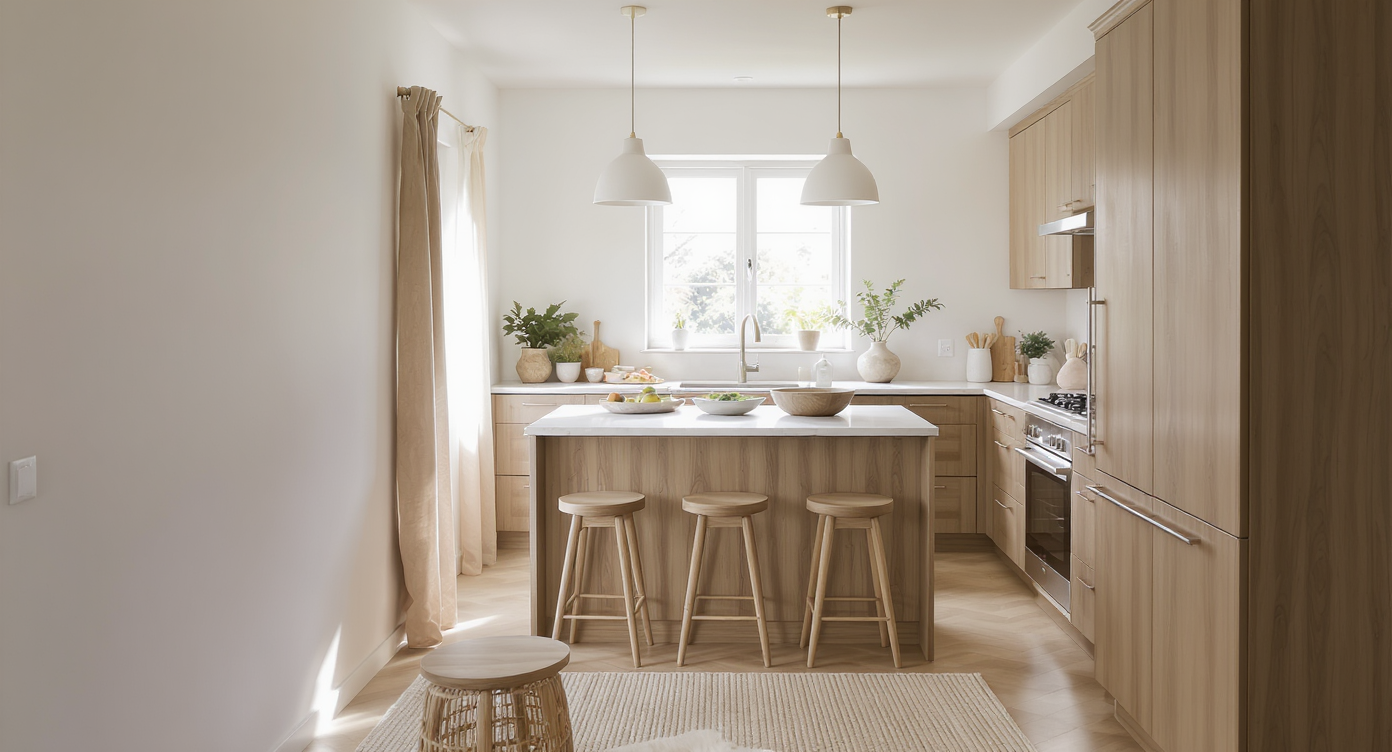
Use light paint colors and layered lighting to transform a larger, dark kitchen into a bright, welcoming space.
New home, big kitchen, dark vibes? Here’s how to brighten a dark kitchen with lighting, paint, and layout fixes without a full remodel.
Here’s the thing: a larger kitchen can feel oddly underwhelming if the lighting is flat and the surfaces skew heavy. The quickest wins are almost always the same — upgrade lighting, pick the right paint color, and make a few smart swaps that set your style. Designers often advise living in the space for a few weeks, but you can still nail a direction today.
Think of it as a series of small edits with big impact. We’ll walk through kitchen lighting upgrades, high-LRV wall paints, when a kitchen island actually fits, the backsplash rule everyone forgets, and whether kitchen rugs make sense in a busy home.
The Fastest Kitchen Makeover: Lighting, Paint, Hardware, Backsplash
In a dark kitchen, upgrading layered lighting and choosing wall paint with an LRV of 60+ are the fastest, most cost-effective ways to brighten the space.
- Kitchen lighting: Replace a dated fluorescent box with a modern flush-mount or semi-flush fixture, then add under cabinet lighting (2700–3000K, 90+ CRI) to remove shadows on the counters. Recessed cans work best 24–30 inches out from the uppers and roughly 4–6 feet apart; put everything on dimmers for day-to-night control.
- High-LRV paint: To reflect light, choose warm whites and soft neutrals with higher Light Reflectance Value. Look for 60–85 LRV — think creamy white, soft greige, or a whisper of beige. Experts recommend testing samples on multiple walls and checking them morning and night.
- Backsplash basics: Use a single, clean backsplash strategy. It should be a 3–18 inch tile field or a 4-inch counter upstand — not both. Simplify with matte subway (3×6 or 2×8), zellige-look tiles, or a pale stone with subtle veining for contrast against dark cabinets.
- Cabinet hardware: Unify mismatched pulls and knobs. Brushed brass or warm nickel instantly softens dark cabinetry; oil-rubbed bronze can work if your appliances and faucet lean warm.
- Window treatment: Swap a heavy curtain for a white or cream Roman shade or simple blind to maximize daylight. Natural light is the cheapest brightening tool you have.
- Microwave vs. hood: If cooking is a priority, designers often advise replacing an over-range microwave with a proper vent hood. Better ventilation keeps walls and paint cleaner and improves lighting over the cooktop.
User insight: A rechargeable, stick-on under cabinet light bar can be installed in minutes and makes a dramatic difference while you plan bigger changes.
Want to test finishes risk-free? Use a visualizer like ReimagineHome to preview paint, backsplash, and hardware combinations before you buy.
Anecdote
Two weeks, three changes: A couple moved into a home with chocolate cabinets and a dim ceiling box. They swapped in a semi-flush fixture, added rechargeable under cabinet bars, and painted the walls a warm white. The kitchen felt new before any demo.
The rolling island win: A home cook wanted seating but the aisle was tight. She tested a 20×40 inch stainless prep table with locking casters; it parked by the window for brunch and slid aside for big cooking days. Prep space increased, flow stayed clear.
The backsplash fix: One homeowner removed the 4-inch granite upstand and ran simple 2×8 matte tiles to the cabinets. The counters finally looked intentional, and the lighter field tile brightened the entire perimeter.
The rug skeptic: A renter-turned-owner swore off kitchen rugs. He tried a washable runner with a thin pad along the main prep lane. It caught drips, cushioned long chopping sessions, and cleaned up in one laundry cycle. Now he has two.
Common Mistakes When Brightening a Dark Kitchen
Choosing the wrong island, paint, or lighting temperature can make a dark kitchen feel even heavier — even after you spend money.
- Going all-white too fast: Painting quality wood cabinets without testing the whole palette can flatten character. If your floors and counters are dark, try light walls and backsplash first; reassess the cabinets last.
- Cool, bluish bulbs: 4000–5000K can look clinical at night. For cozy brightness, most kitchens feel best at 2700–3000K with high CRI for accurate color on food and finishes.
- Cramped island: An island needs 36 inches of clear walkway minimum; 42–48 inches is better in a working cook zone. If you can’t maintain that on all sides, use a narrow rolling island or skip it.
- Double backsplash: The 4-inch stone upstand plus tile above creates a cluttered visual line. Choose one. A single continuous tile backsplash looks intentional and modern.
- Fussy rugs: Full-room plush rugs collect spills. Washable runners or low-pile mats by the sink and range are practical; look for non-slip backing or an underlay.
Pro Tips: Layout, Island Size, Color, and Venting
For a narrow or long kitchen, a 20–24 inch-deep, 18–24 inch-wide rolling island can add prep space without blocking the work triangle.
- Island sizing: Tape the footprint on the floor and load in boxes to simulate volume. If doors, the dishwasher, or fridge can’t open fully with 36–42 inches around, the island is too big.
- Pendant placement: If you add pendants over a future island, start 30–36 inches above the counter and space 24–30 inches apart for even light. Always dimmable.
- Work triangle reality check: Ideal center-to-center distances between sink, stove, and fridge typically fall between 13–26 feet total. If the triangle already works, don’t compromise it for seating.
- Color pairing for dark cabinets: Pale backsplash + light walls + warm metal hardware calm the room without repainting wood. If repainting, pros often suggest a soft white on uppers and deeper base cabinets for balance.
- Flooring triage: If the tile pattern bothers you, focus on lighting and paint first; many uneven patterns fade visually once surfaces are brighter.
- Ventilation: A 300–600 CFM hood is a solid target for most home ranges; vented outside beats recirculating for odor and grease control.
Reflection: I’ve seen people chase dozens of decor swaps before fixing lighting; once they added dimmable layers, the room finally felt like the kitchen they imagined.
Tools, Budget Helpers, and Visual Planning Resources
Free and low-lift tools can speed decisions and reduce costly do-overs when planning a kitchen makeover.
- Visualization: Upload a photo to ReimagineHome to test high-LRV paint, brass hardware, or a light backsplash against dark cabinets.
- Lighting kits: Plug-in or rechargeable under cabinet bars are a weekend win; look for motion sensors and 90+ CRI.
- Rug strategy: Try a 2×8 or 2.5×10 washable runner between sink and range; low-pile, indoor–outdoor blends rinse clean.
- Hardware sampler: Order a few finishes — brushed brass, champagne bronze, warm nickel — and view them at night and day before committing.
- Image alt text ideas: Use descriptive alt text like “long narrow kitchen refreshed with warm white paint, under cabinet lighting, and a slim rolling island.” Captions can highlight the update, e.g., “Warm LED under cabinet lights eliminate shadows on prep surfaces.”
Visualization Scenario
Picture late afternoon light spilling over new warm-white walls, under cabinet LEDs washing the counter, and a slim butcher-block cart centered on painter’s tape lines you tested last weekend. Brass pulls catch the glow. The backsplash is a quiet matte tile that makes your dark cabinets look tailored instead of heavy. Music’s on, you’re chopping herbs by the window, and the space finally feels like the big kitchen you hoped for when you moved in.
FAQ: Quick Answers to Kitchen Makeover Questions
- How should I brighten a dark kitchen with lighting and paint?
Use warm 2700–3000K bulbs, add under cabinet lighting, and paint walls with an LRV of 60+ to reflect light and reduce shadows. - What’s the best size for a kitchen island in a narrow kitchen?
Maintain 36–42 inches of clearance on all sides; many narrow kitchens suit a 20–24 inch-deep rolling island instead of a fixed one. - Should I use a rug in the kitchen?
Yes, if it’s a washable runner or low-pile mat with non-slip backing placed at the sink or along the main prep zone for comfort and color. - How do you choose a backsplash for dark cabinets?
Pick a lighter, matte tile or subtle-vein stone to contrast the cabinetry; avoid combining a 4-inch counter upstand with tile above. - Is it worth replacing an over-range microwave with a vent hood?
For frequent cooking, a 300–600 CFM vented hood improves air quality, lighting, and keeps paint and cabinets cleaner over time.
Make It Bright, Make It Yours
Small, smart upgrades can make a big kitchen feel bright, warm, and genuinely functional without a remodel. Start with layered kitchen lighting, pick a light-reflective wall color, streamline the backsplash, and only add a kitchen island if generous clearance remains. Live in the room, note what you reach for and where you stand, then let those patterns guide the rest.
When you’re ready to test ideas visually, try them on a photo in ReimagineHome and make confident choices you’ll love cooking in every day.
.svg)

.svg)
.jpg)
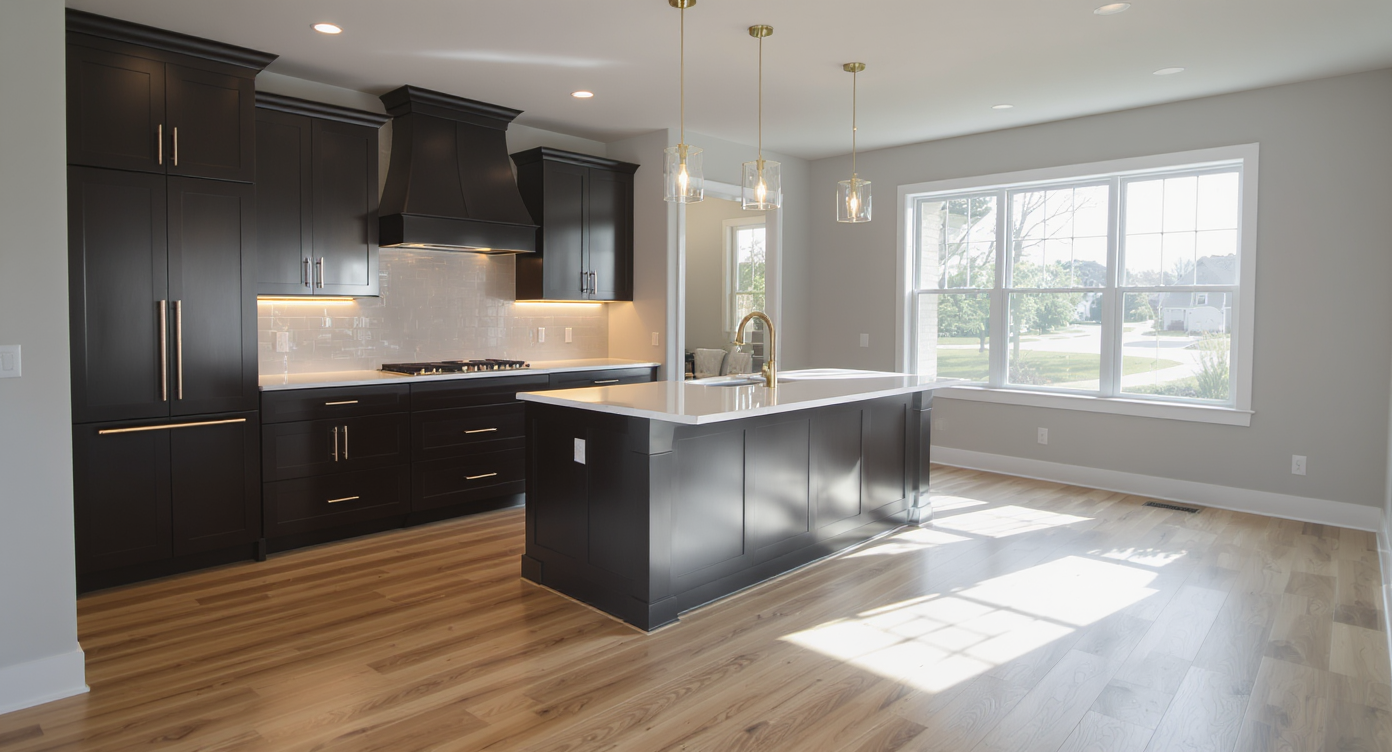
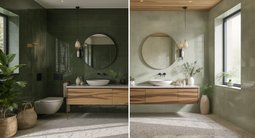
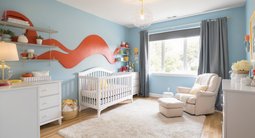

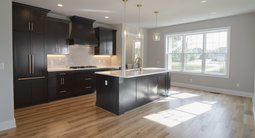


.png)